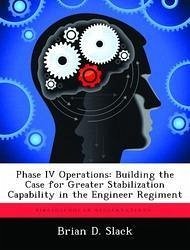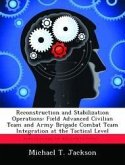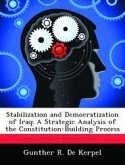Today, the United States Army Engineer Regiment is decisively engaged in both supporting the Global War on Terror and transforming itself to meet the security challenges of the future. But what are those challenges? What capabilities does U.S. National Security Strategy require of its military instrument of power? More specifically, what capabilities will a transformed U.S. Army require of its Engineer Regiment? Where are the major capability gaps and how should they inform engineer transformation to ensure that the future engineer force has the right capabilities to support a modular Army during full-spectrum operations? This paper argues that the major capability gap in today's engineer force -- and vital for future full-spectrum operations -- is the ability to support long-term stability operations. It begins by exploring the changes in U.S. strategy that have brought stability operations to the forefront. Then, it discusses the doctrinal differences between stabilization and reconstruction efforts to define the requirements and responsibilities of supporting stability operations. Next, an analysis of Army and engineer transformation efforts is conducted to identify capability gaps as they relate to the conduct of stability operations. Finally, this paper suggests two areas where engineer leaders should make adjustments in engineer transformation to ensure the Nation has a truly expeditionary Engineer Regiment with the campaign qualities and stamina to conduct full-spectrum operations.
Bitte wählen Sie Ihr Anliegen aus.
Rechnungen
Retourenschein anfordern
Bestellstatus
Storno









